
Discovery of the M31 [OIII] emission arc
Recently, a major discovery by an international team of amateur astronomers and scientists has become a huge online hit, and this new discovery is just located in one of the
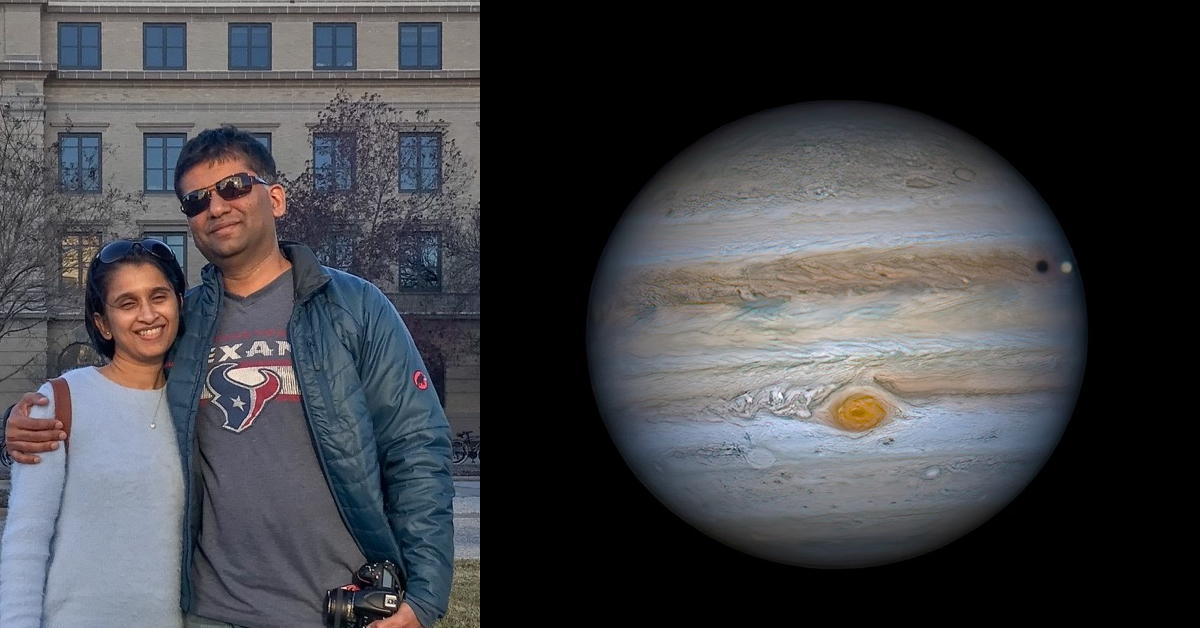
Anis Abdul is the winner of ZWO 2020 ASIWEEK #33 and has brought us many extraordinary astronomy photos. To make our ZWOers know this excellent astrophotographer better, we make this interview. Let’s all take a look now.
Hi, my name is Anis Abdul. I live in Austin, USA. I am 43 years old. I have been interested in astrophotography for almost 2 decades. Austin has an active astronomy community which was very helpful and I started astrophotography from Jan 2014. I am interested in all types of astrophotography such as Deep space imaging, Planetary and Solar Imaging.

I have been mostly imaging from my backyard in Austin. But I have recently setup a system at dark skies in west Texas. I have different setups optimized for different types of imaging. Some of the configurations are:
1. Widefield setup:
Astrophysics AP900GTO mount with Takahashi FSQ106ED with multiple different cameras: ASI1600MM, QHY814A, FLI8300 with ZWO174-mini guider
2. Long focal length setup:
Astrophysics AP900GTO mount with Celestron EdgeHD 11 with ASI1600MM, QHY814A and FLI8300 with ZWO174-mini guider

Edge 11 setup
3. Planetary:
Astrophysics AP900GTO mount with Celestron C14XLT with ZWO ADC, ZWO ASI174MM, ZWO224MC, ZWO290MC-cool

C14 planetary
4. Solar:
Astrophysics AP900GTO mount with Explore Scientific AR150 Doublet or Orion ST80 with Daystar Quark Chromosphere and ZWO ASI174MM.
Some of the images from these setups:

This was my first APOD: SH-308 with ASI1600MM-cool with FSQ106ED

This is my second APOD: Elephant trunk – high res with ASI1600MM-cool and Celestron Edge11

Sun in HA using Daystar Quark Chromosphere, ES150 Doublet, ASI174MM

Montes Apenninus – C14/ASI174MM/Baader IR685
I am primarily a DSO imager, but I have been very interested in shooting high-resolution planetary images. I bought a used Celestron C14XLT early part of 2020 with that aim. The first thing I did was to get an image train that is optimal. I decided to start with a one-shot-color camera instead of the mono to make things easier.
With 2.9um pixels of ASI290MC. The critical sampling for the C14 is at a focal ratio of around 15. So, I got a Siebert 1.5x telecentric Barlow. With the outer planets staying in lower altitudes, I needed to use ZWO ADC. I also used a Baader UV/IR filter. I also added a Moonlite Crayford focuser with high res stepper motor for remote focusing.
The image train is:
C14->Moonlite CHL 2.5’’ Crayford focuser->Siebert 1.5x barlow-ZWO ADC->Baader UV/IR Cut filter->ASI290MC.
On the night of imaging, I allowed the scope to cool down for a couple of hours to avoid thermal tube currents. I also tuned the ADC when the planet was at near its peak of 30 degrees altitude using FireCapture’s ADC tuning tool. I also did minor collimation adjustment of the scope using one of the moons of Jupiter.
Imaging was done using FireCapture and I kept the gain low (at 275) and had a FPS of about 40. Histogram was at around 80%. Capture was done using 8bit mode and stored as RAW SER file. I tried to get the best focus I could during the capture. I shot a series of multiple videos of 150 to 180s.
The main thing we cannot control is the seeing and it luckily was getting better that night. The seeing during this time can be seen in this video.
Here is an animation of the videos showing the seeing improving:

Processing:
Stacking was done in Autostakkert 2. 50% of the video was stacked.
Initial sharpening: Deconvolution was used in Pixinsight (parameteric PSF (2.2 StdDEV, Shape 0.6 with Regularized VanCittert algorithm – 50 iterations)
Secondary Sharpening: Deconvolution with much lesser threshold as well as Local histogram equalization
Color correction: Registax 6 color autobalance. No wavelets done here,
Final processing: Photoshop with curves, levels, Saturation
Sharpening: Topaz denoise AI with sharpening (applied with 25% opacity to blend to give a sharp look)
The whole thing works only due to the seeing! The data as to support the sharpening processes without falling apart. Different folks have various types of rendering of the data (Soft, smooth etc.). I prefer sharp/colorful presentation.

I mostly have been imaging from my backyard. Planetary and Solar imaging are always done in my backyard. My setup is usually left under a cover of Telegizmo 365 cover.
I have a shared setup in Marathon Texas with Celestron Edge11/AP1200 combination. I am also setting up a personal remote observatory in darker skies west of Austin for DSO imaging. I hope to have that setup operational in a month.

Mars. Taken with Celestron C14 XLT and ASI290MC Cool
Astrophotography is a unique blend of science and art and I find it very satisfying as a hobby. The steep learning curve, dependence on weather means, when you get a good image, it is immensely satisfying. It allows one own unique interpretation and presentation of our natural wonders.
I do it mainly for fun (getting pretty pictures) but I would love to be able to contribute to the scientific community. I have collaborated with other imagers for some interesting projects (Hubble’s variable nebula animation, full map of Jupiter etc.). I am hoping to do more collaboration in the future. I would also be interested in doing astrometry and exoplanet hunting in the future.

Color enhanced moon to show various mineral region. Taken with ASI1600 with R/G/B filter and aligned in post processing.
It all started in 2014 when my wife gifted me a 6’’ Newtonian telescope and I stuck my DSLR with T-mount adapter into the focuser. Like many, once I saw the image of Orion Nebula, I was hooked! The biggest contribution in developing the craft came from the fine folks at the Beginning and Intermediate Imaging forum at CloudyNights. There are lot of very helpful members who went out of their way to help new imagers like me. For that, I am forever grateful. I also had a lot of help, specifically in Pixinsight from local members in Austin. It took about 6 months before I got a reasonable image (M51) using DSLR. Within one year, I had bought a SBIG ST-8XME and then a QSI683 and I was completely consumed by the hobby and it is still going string!
Here is my very first image:

My first astro image in Jan 2014 – Celestron OMNI150 XLT with Canon T3 DSLR!
My first ASI camera was the venerable ASI120MC! I loved using that camera and was one of my first planetary camera. After that I bought ASI224MC, ASI178MC-cool, ASI174MM, ASI290MC-cool . My first ZWO DSO camera was the ASI1600MM-cool. ASI has been instrumental in moving the pace on camera technology at a rapid pace. I truly believe that ASI1600 is a pivotal camera in expanding the astrophotography hobby. I don’t know of any other camera that had so much impact. I have two APOD using the ASI1600 and this model will always have a special place in my heart.

Bubble Nebula, taken with Celestron Edge 11HD and ASI1600MM Cool.
I am excited to see new offerings from ASI, especially with newer form factor (all-in-one models with integrated FW/OAG that fit within 55mm will be extremely popular).
Here is it in a widefield setup with Nikon lens.

For DSO, I prefer Mono due to its versatility. With Light pollution getting worse everywhere you look, the mono + narrowband is a potent combination.
For Planetary, I still lean on using one-shot-color mainly for convenience. I find cameras like ASI290MC / ASI224MC can approach mono’s performance.

Saturn. Taken with Celestron C14 XLT and ASI290MC
With the ASI6200 (and other variants with the same chip), I am already very happy with the full-frame mono CMOS cameras that have low read noise, deep well. This was my “best case camera” even a year ago. This camera is looking like a game changer (which possibly will end CCDs reign).
My hope is that this improvement will continue and will allow lucky imaging of DSO to allow high resolution imaging just as the case of planetary. The low noise + high gain offers very intriguing possibilities that are very exciting.
Having such a camera will low short exposures that will negate the need of very high-performance mounts and which in turn will allow astrophotography to be more accessible!

M64 – Lucky imaging with the uncooled ASI174MM
I love photography! I find daytime photography and astrophotography to be two side of the same coin. They both offer their unique technical challenges and reward precision. Both allow exploring and engaging with our surrounding in different ways. Once you take a camera, a boring backyard becomes a place of immense interest with so many subjects to explore and photograph. Macro lens + Telephoto lens is a great medicine for being stuck at home due to the pandemic.
While the daytime photography requires observation and being ready to shoot when the opportunity presents itself, astrophotography rewards planning and preparation.
Both types of photography allow pushing the limits with post processing.
Both allow us to keep learning new techniques and improving our methods.
Both give us a reason to buy new gear.

Rosette Nebula in hubble palette

Black chinned Hummingbird with Sony A7R2 and Sony 200-600 @600mm
I am very interested in high resolution, high focal length imaging, specifically ARP, ABELL and Planetary Nebulae targets.

Little Dumbbell Nebula. Taken with Celestron Edge 11HD and ASI1600MM-Cool.
I find imaging the less common, or less accessible targets to be lot more interesting. The challenge of getting imaging and matching details on objects that used to require professional observatory level telescopes is a great motivator.
Therefore, there is always something or other to image regardless of the seasons!
As for a specific region, I do love the colorful Rho Ophiuchi cloud complex.
I think it is really hard to quantify on what constitutes a good astrophoto. Without specific restrictions, it is hard to compare two images.
For example, an image taken from a backyard from a light polluted backyard with modest equipment cannot compare against an image from a fixed observatory However, the effort to take a good image from such light polluted location may be lot more than that of the observatory image. At the same time, setting up a working, remote operation on an observatory takes commitment, effort that cannot be quantified.
Another point is that, there is really no standard on what constitutes “correct” processing. As long as data is not altered egregiously (cloning, copying, mixing unattributed data), most processing is fair game. These are all pursuits of pretty images than publishing scientific results.
But, given those restrictions are in place, an experienced set of imagers can come to a consensus on a case by case basis (The type of process, the difficulty in imaging some target, etc.)
There are few targets that have been hard for me and I would like to do a good job
1. ISS – This has been something I have been trying to do. Especially with a C14 + 2.5x Barlow. Every time I have attempted, I have made one mistake or another that resulted in failure J . I really would like to image ISS with sufficient detail to identify various modules. IMO, this is quite challenging for me with manual tracking etc,
2. Uranus and Neptune – I want to image these with the C14 + 2.5xbarlow and try to get some kind of detail in the disk. This is a challenge that will require trial and error with different filters (IR685 or IR610) with ASI174MM that may work.
For DSO work, my plan is to work on setting a long focal length setup that can be used to image ARP targets. In addition, I have always wanted to image gravitationally lensed object like the Smiley face: SDSS J1038+4849 – I want to be able to get some detail on this target using a C11 or higher.
I appreciate all the advancements in camera technologies your company has been doing. Being able to bring astro-imaging to a wide set of people allows creating a community that goes beyond country and cultural boundaries. In this day and age, Its impact cannot be understated. The combination of reasonable price and very good performance is a key reason for that.
Your company pushes the boundary on developing newer cameras that allow imaging target that were simply not possible few years ago. It is not just a question of building one or two type of cameras and sticking with it. Instead, newer models have been continuously released that allow truly specialized setups for specific types of imaging.

M27. Taken with Celestron Edge 11HD and ASI1600MM Cool.
In addition, developing non camera hardware like the ADC has been of immense help! For me, being in 30N, this has been a game changer. I truly appreciate that aspect. I hope you will continue doing hardware development like this!

The excellent ADC!

Recently, a major discovery by an international team of amateur astronomers and scientists has become a huge online hit, and this new discovery is just located in one of the
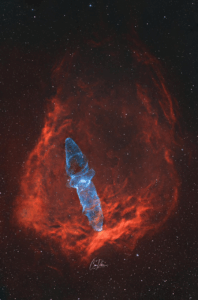
To most people, this might just look like a pretty picture. But to astrophotographer Cem Diken, it’s the result of three years of chasing a nearly invisible ghost in the

I was born in Guadalajara, I’m 38 years old, a musician, communications and electronics engineer, and president of the Guadalajara Astronomical Society A.C. since 2020. First Contact with Astronomy Since
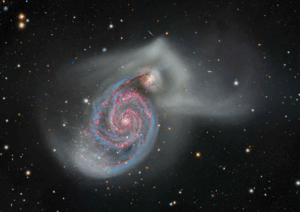
This stunning collaborative project comes from astrophotographers Alex Linde and Thomas Hansson, who joined forces across borders to photograph the Whirlpool Galaxy from Sweden, Poland, and Texas, USA. Thomas traveled across
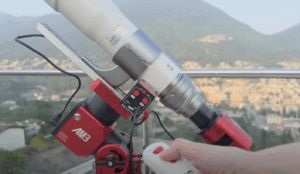
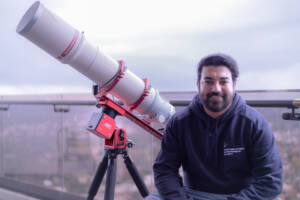
“Two thoughts immediately crossed my mind—the vastness of the cosmos, and that I could also create images like the ones that inspired me.” ” If you spend more time debugging than